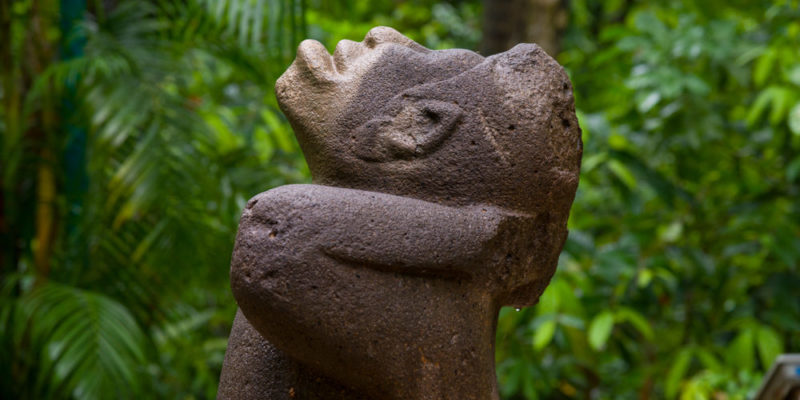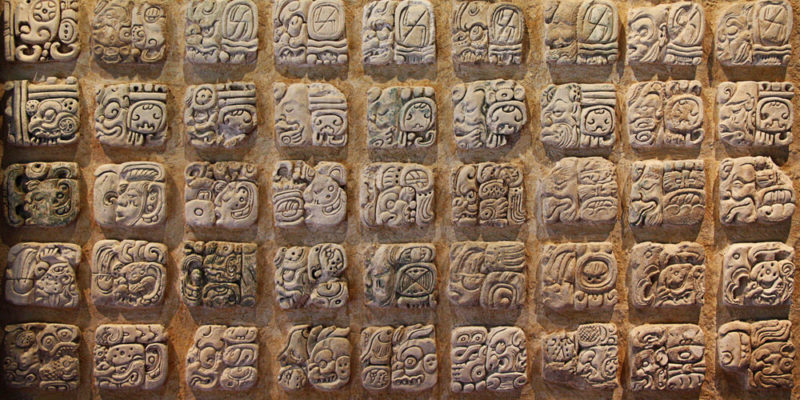We explain what Mesoamerica is and what its characteristics are. Also, how was their religion and the outstanding contributions of this region.
What is Mesoamerica?
Mesoamerica is a historical region of the American continent that included the current countries of Costa Rica, Nicaragua , Honduras, El Salvador, Guatemala , Belize and south-central Mexico . Its name comes from the Greek, mesos which means "middle" or "intermediate" and refers to the lands of Central America . The region is considered one of the six cradles of the world's early civilization, inhabited by various peoples at different times.For thousands of years Mesoamerica was populated by sedentary societies , such as the Olmecs, Zapotecs, Mayans, Toltecs, and Aztecs. These civilizations were characterized by their great cultural development with a sophisticated architectural style, by the cultivation practices (of corn , beans, avocado and vanilla) and by the complex systems of government and religion.
Characteristics of Mesoamerica
 The history of Mesoamerica is divided into three periods:
The history of Mesoamerica is divided into three periods:
- Preclassic. It ranged from 1,500 BC to 300 AD
- Classic. It ranged from 300 AD to 950 AD
- Postclassic. It extended from 950 to 1521 AD. C.
Archaeologists estimate that in 11,000 BC the hunter-gatherer peoples occupied most of the territory of Mesoamerica. The shift towards agriculture began from 7,000 BC and allowed peoples to settle in a sedentary way.
The gradual domestication of food plants , such as corn, beans and squash, gave rise to agricultural life that benefited from the properties of the moist and fertile soil. The struggle for control of these agricultural lands by the dominant sectors gave rise to the first Mesoamerican civilization, the Olmecs.
As the Olmecs improved agricultural productivity , other activities such as the arts and commerce emerged . They practiced ceramics with varied styles and made the first sophisticated architectural works, such as the pyramids and the "colossal heads" carved in stone, almost 3 meters high.
Starting from the classical period (between AD 300 and AD 950) , urban complexes and large religious centers were built . For example, Mount Albrán built by the Zapotec civilization, which received the architectural influence of the Olmecs.
During the last period, called Postclassic (between 950 and 1521 AD), the Mayan, Zapotec, Totonac and Toetihuacan civilizations developed important advances in monumental architecture , astronomy , mathematics and writing .
During the last Mesoamerican period there were numerous confrontations between the different civilizations that sought to expand and obtain more and more power and control of the lands. The last powerful empire was Azcapotzalco, which fell to the Spanish invasion in 1521.
Mesoamerican civilizations

The main Mesoamerican civilizations were:
- The Olmecs . They formed the first great civilization in the region and lasted until the pre-classic period.
- The Mayans . They developed great knowledge of mathematics, astrology, and writing.
- The Zapotecs . No traces were found of the origin of this civilization or its migratory path.
- The Aztecs or Mexica . They developed great palaces, temples, and markets . They managed to expand through wars.
- The Mixtecs . They reached their greatest cultural development in the postclassic period with a large number of city-states under their rule.
- The Toltecs . They achieved great fighting skills and stood out for the sophisticated weaponry used in battles.
- The Teotihuacanos . They contributed sophisticated techniques in art. For example, pottery includedgeometric paintings and images of gods.
Mesoamerican religion

The various religions of Mesoamerica had certain characteristics in common:
- Polytheism. All religions worshiped various gods, although some prioritized a particular deity (such as the feathered serpent for the Olmecs).
- Animals considered gods. All religions used at least one image of an animal to represent some of their gods.
- The priestly caste. In all religions, there was a privileged group that controlled religious rituals, writing, and the calendar.
- The sacrifices. In all religions various human sacrifices were practiced, to give as an offering to the gods.
Contributions of Mesoamerican cultures

Among the most important contributions of Mesoamerican cultures are:
- The writing system. The first to develop a writing system were the Olmecs. They were called glyphs, which consisted of symbols that represented a concept.
- The calendar. The first sacred 260-day calendar was created by the Olmecs. It was a great influence for the Mayan calendar.
- The architecture. The knowledge of mathematics and astrology of the different Mesoamerican civilizations made it possible to turn the villages into monumental cities .
- The pyramids. The knowledge in architecture reached its maximum expression with the pyramids. They fulfilled diverse functions like ceremonial centers or points of connection with the supernatural world.
Abubakr Conner brings a diverse skill set to our team, and covers everything from analysis to the culture of food and drink. He Believes: "Education is the most powerful weapon that exists to change the world." .
Leave a reply
Your email address will not be published. Required fields are marked *Recent post

Sport: What Is It, Types, Risks, Features, Characteristics and Examples

Dogs: Emergence, Features, Characteristics, Feeding and Breeds

Story: Definition, Elements, Structure, Features and Characteristics

